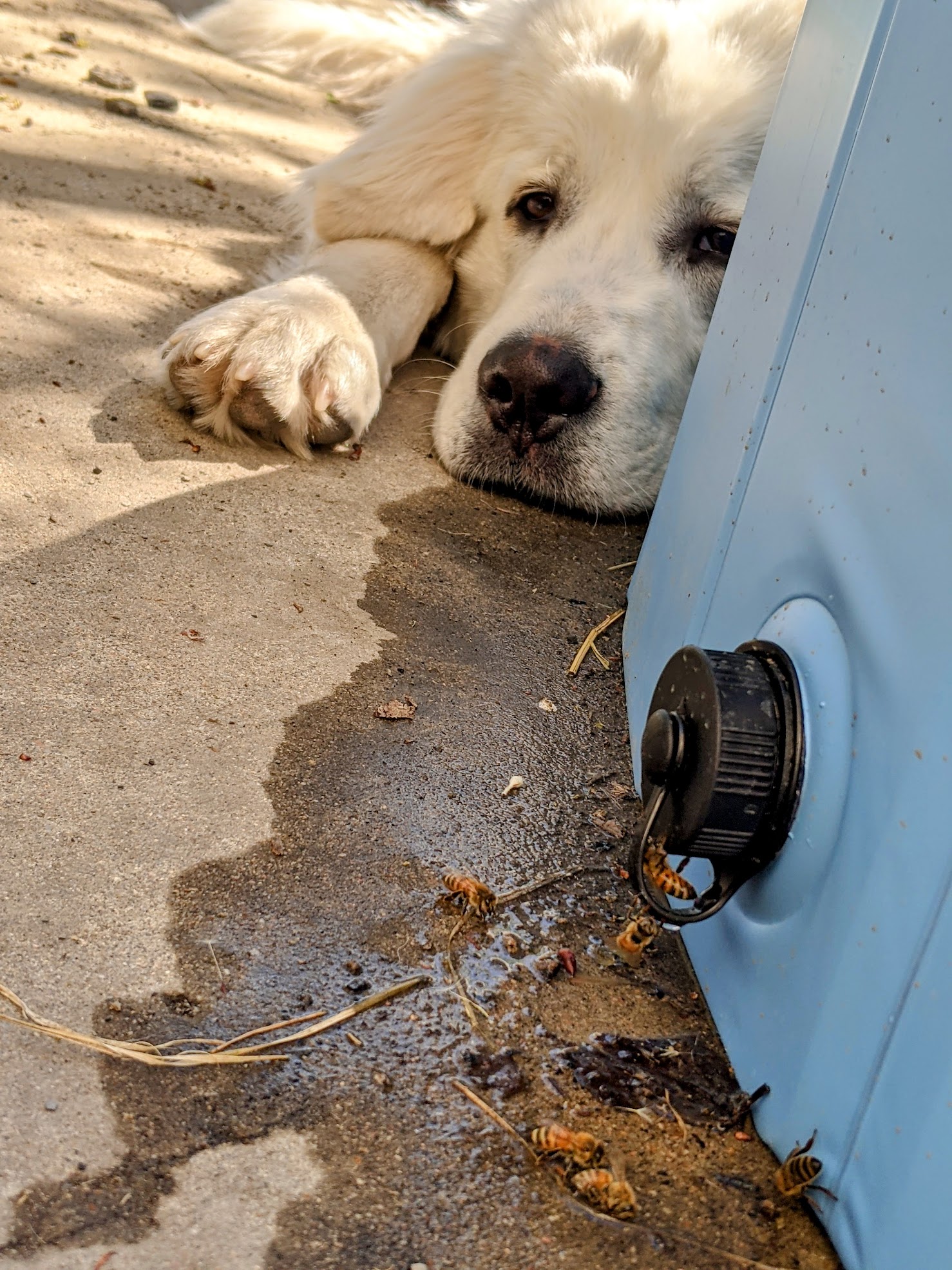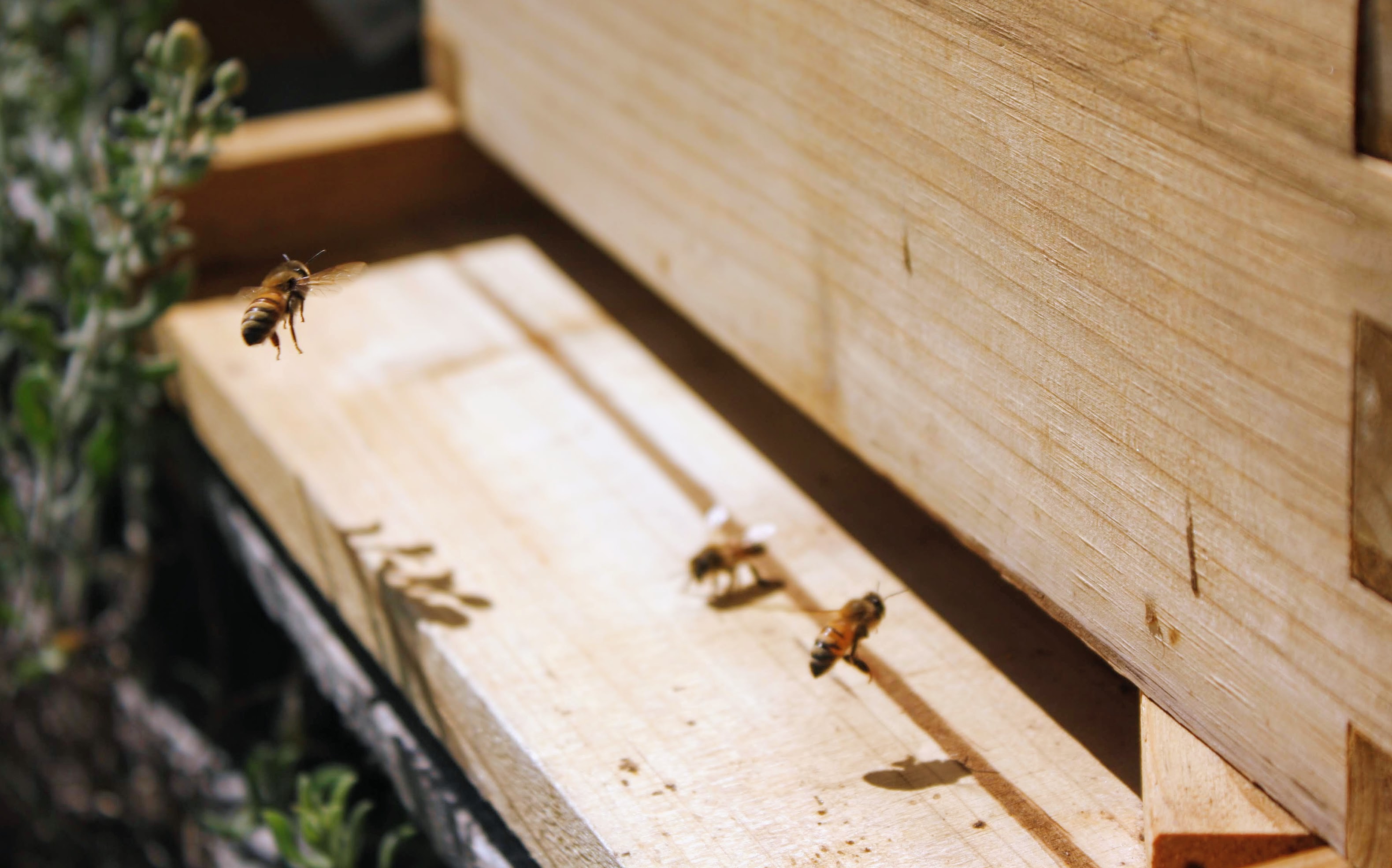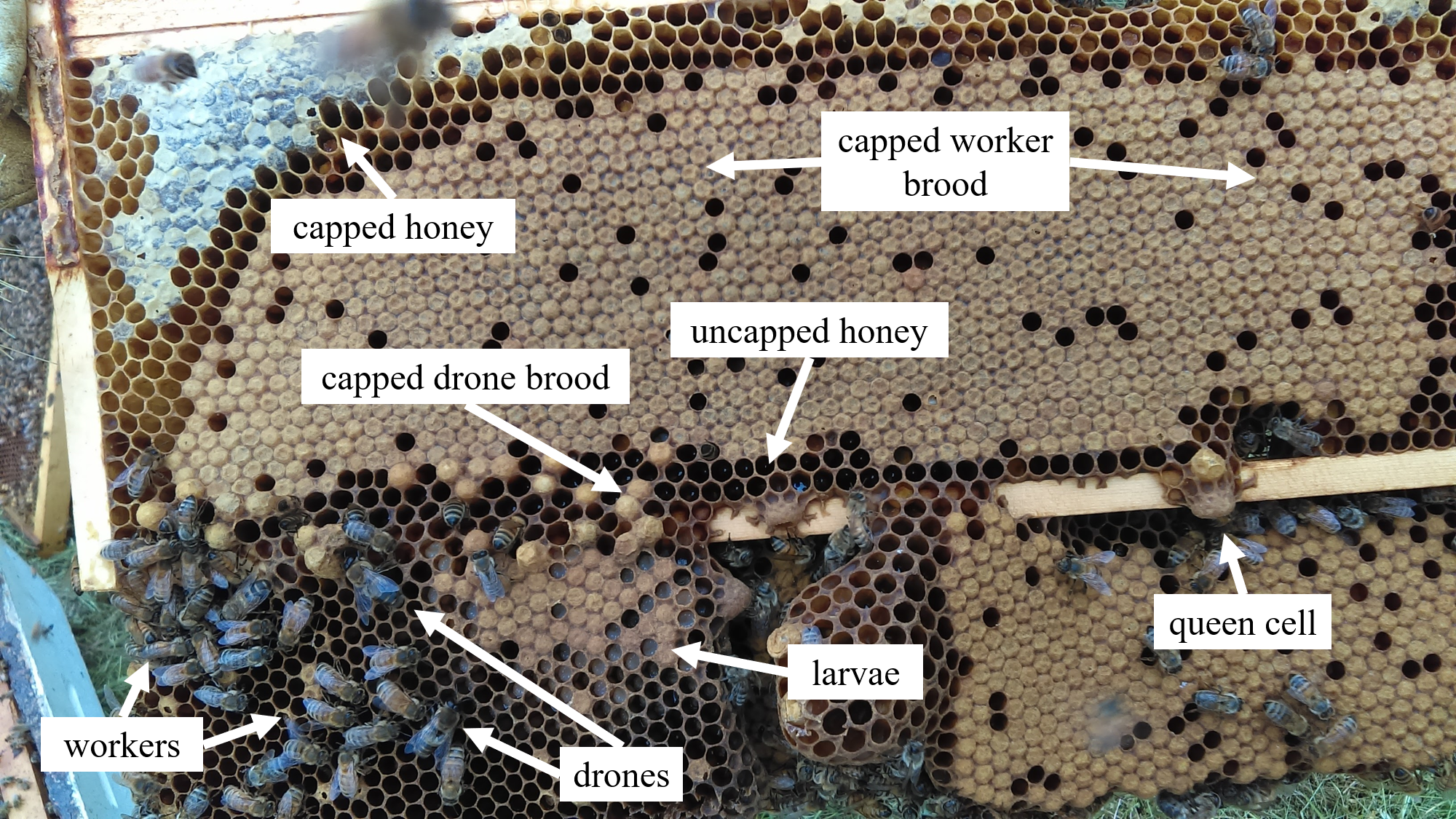
The European honey bee, Apis mellifera, is the most common species of honeybee kept in the United States. Honey bees are eusocial, meaning they are truly social: overlapping generations, cooperative brood care, and the division of labor are all signs of eusociality. Honey bees live in colonies with populations in the tens of thousands adults. There are three social castes:

Most of the bees you'll find in an apiary in the United States today are Italian honey bees, Apis mellifera ligustica. They are generally good honey producers without being terribly aggressive. Actually, most of the bees you'll find are probably either hybrids or specially bred by far more intensive beekeepers than I am. Many beekeepers will wax poetical about the superior genetic traits of their stock, but I prefer just letting mine bee.
It is important to note that, as suggested by the name, European honey bees are not native to the United States. In fact, as supergeneralists (meaning they can extract nectar from nearly any flower), they have proven to be quite capable, successfully displacing native pollinators and establishing themselves as permanent residents. While the ethics of introducing non-native, albiet potentially "beneficial" species to the wild is (and rightly should be) hotly debated, by this point, it is moot. The bees are here, and here they shall remain. Just think of your bees as livestock, like chickens and goats.
Honey is what happens to nectar after being partially digested and dried out. Forager bees collect nectar from the flowers and transport it to the hive in their honey crops. Upon returning to the hive, the nectar is transferred to hive bees. Enzymes in the bees' stomachs and saliva break down and invert the sugars as the product is continually passed from bee to bee via mouth-to-mouth trophallaxis. Finally the mixture is deposited into the honey comb and fanned until it has concentrated to less than 20% water. Most of the honey is capped for storage; a small amount is mixed with pollen to make bee bread, protein and energy rich foodstuffs for larvae.
Honey is a supersaturated solution of inverted sugars (fructose and glucose) and trace amounts of vitamins and minerals from pollen. It is also sugar. Honey is just as nutritionally effective and/or defective as sugar. It is not magical bee-vomit, but it is naturally antimicrobial and hygroscopic, meaning it will pull moisture out of the air if unsealed. It will last forever* if it remains sealed. If your honey gets too cold it might crystalize; this is easily remedied by heating it for a bit in the microwave. Never feed honey to an infant less than 1 year old; it might contain trace amounts of botulism.
Beeswax is the natural wax produced by honey bees. It is secreted from special glands in the worker bees' abdomens; the bees chew on the wax to soften it before building it up in cell structures. Honeycomb is hexoganol because that is the most effecient way to stack tubular shapes with the least amount of material.
Another material bees make is propolis. It is a sticky, gluey substance produced from tree sap. It varies how much propolis you'll have to deal with - some bees barely use it, some bees glue their entire hives together with it. Propolis is antimicrobial and helps waterproof and insulate the hive. I once opened up a hive that had a mummified mouse tucked away in the corner, almost perfectly preserved. The mouse had gotten in and likely wreaked havoc before succumbing to bee venom. It was too heavy to drag out of the hive, so the workers mummified it with propolis.
To begin beekeeping, you'll need a few things first:
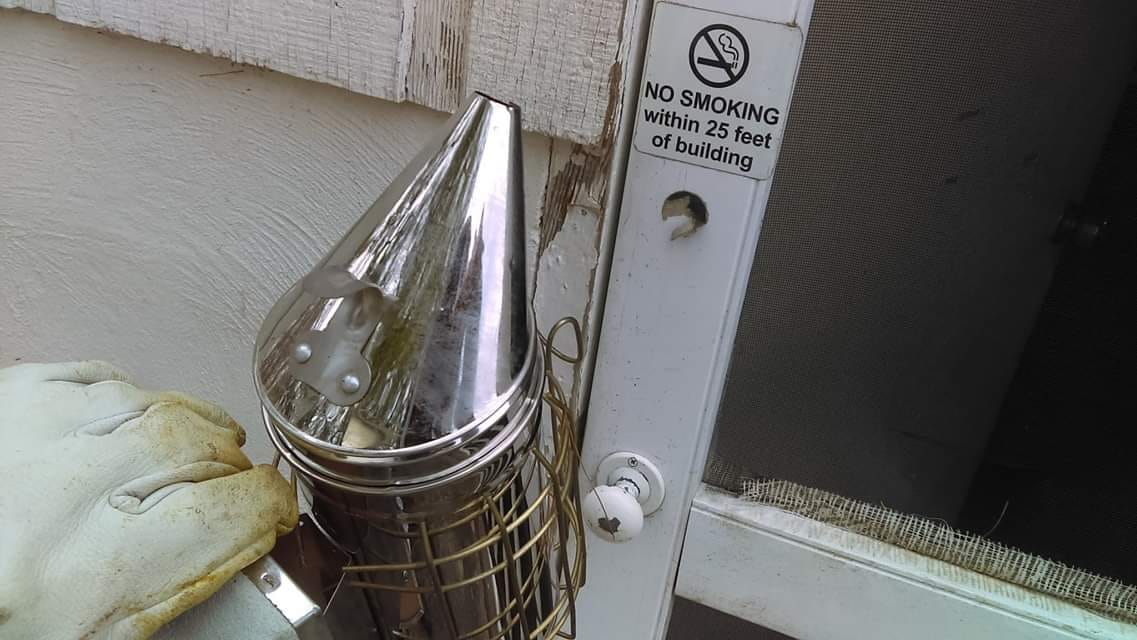
The Langstroth hive was designed to optimize bee space and simplify the process of beekeeping. It is essential to have the hives constructed before you buy your bees. You can buy hives prebuilt, as kits, or make them from scratch. If that's the case, you will want to pay particular attention to the dimensions of each component.
The bottom board must be made of exterior-grade plywood or similar material and should be elevated. Some bottom boards have a mesh layer under which you can place a sticky trap to keep track of Varroa mites. When a hive body is stacked on the bottom board, there will be a 7/8" gap; this is the entrance space. You can get or make an entrance reducer to keep out predators and the cold in the winter.

Hive boxes (aka supers) are the body of the hive. The hive boxes come in several sizes; generally you'll want deep brood hive boxes and either medium or small supers, depending on how much you trust your arm muscles. A queen excluder can be placed between the brood boxes and the supers to prevent the queen from laying eggs in the honey storage.
Hive boxes come in 10-frame, 8-frame, and 5-frame standards (ignore these; nucs are temporary). It is a matter of personal preference which to use, but consistency is key. The dimensions of standard 10-frame hive bodies are as follows:
| Type | Depth | Interior Length | Interior Width |
|---|---|---|---|
| Deep body | 9 5/8 inches | 18 3/8 inches | 14 3/4 inches |
| Medium body | 6 5/8 inches | 18 3/8 inches | 14 3/4 inches |
| Shallow super | 5 11/16 inches | 18 3/8 inches | 14 3/4 inches |
As you can see, 10-frame hives are square, meaning the only difference in dimension is depth. This is very convenient when you are building your own hives.
You can paint your hives or not, but some sort of weatherproof coating is recommended.

Frames are typically made of inexpensive softwood and are meant to be replaceable. The top bar of the frame extends on each side so it can rest on the inner lip of the hive boxes. The foundation provides a guideline for the comb-building bees. It can be plastic, dipped in wax, or made entirely of pressed besswax. These often require metal wire supports, and for some reason some bees really hate them while others could not care less.
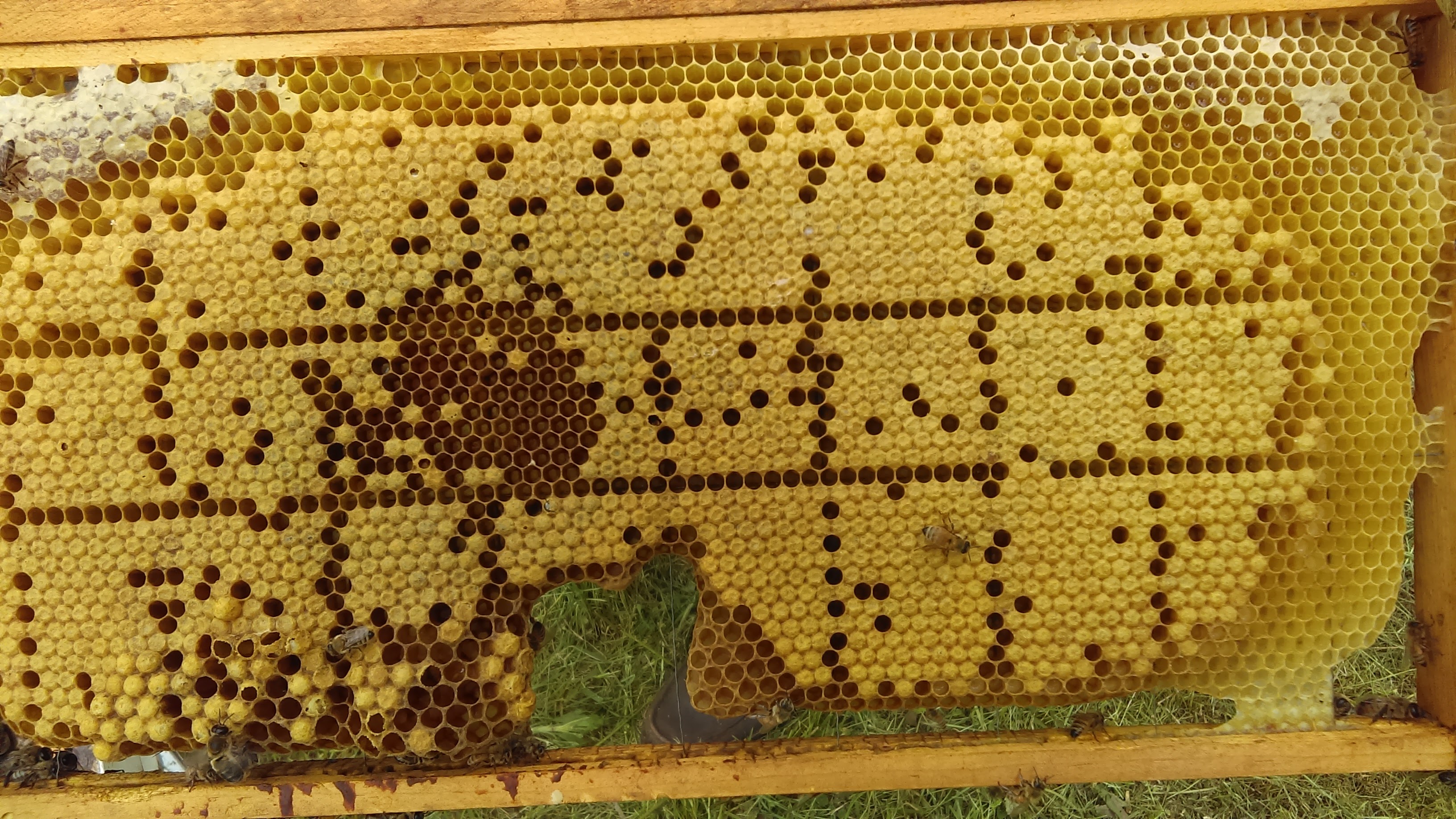
The Langstroth hive features two lids: an inner cover that rests on top of the top box, and a telescoping outer cover. The outer cover ought to be weather resistant and may need to be tied or weighed down if you live in a particularly windy area.

How you install your bees depends on how you've acquired them.
A package of bees is approximately 2-3 lbs, or around 10,000 adult bees, and a seperately caged queen. Installing a package is fairly simple. First, open the hive and remove the center frames from the brood box. Remove the queen cage from your package of bees and check to see she is still alive. If the queen cage has a candy plug, keep it there; the bees will slowly eat it and free the queen, and the time and effort will acclimate them to her pheromones. If the queen cage has a regular cork, remove it and replace it with a marshmallow or powdered sugar mixed with crisco.
Hook the queen cage onto one of the frames or gently place it on the bottom board. The next step is to dump the rest of the adult bees into the box. Tip the cage upside down and give it a few solid shakes, until the bulk of the bees have fallen into the hive body. Place the cage and the rest of the bees next to the hive; they will find their way home.
Once you have dumped the bees into the hive, you can carefully return the frames and close it back up. You will want to feed the bees for the first couple months while they build up their food stores. You will also need to recheck the hive within a couple days to ensure the queen has successfully escaped the cage.

A nuc-box is a small, 5-framed hive with a laying queen and approximately 10,000-15,000 adult bees. The benefit of a nuc box is the frames, which ought to be combed out and already contain some brood and honey/pollen stores. Installing a nuc box is simple: remove five frames from your own hive, replace with the frames from the nuc. Then dump the remaining adults into the hive, and leave the empty box nearby.
Depending on how well the food stores are built out, you may need to supplement your hive for the first couple weeks. Although they have had a small advantage over packaged bees, there are still plenty of frames that need filled out.
If you are lucky enough to catch a swarm, you can treat it like a package of bees. The only difference is the queen is somewhere inside that swarm, not in a convenient cage. If you can't find her in the swarm, wait a few days and recheck.
Occasionally beekeepers will sell an entire established hive, including the body and supers. This will only work if you live at least 3 km away from the apiary; otherwise the bees will return to their original home. The hive will need to be sealed up and ideally transported overnight.
Regardless of installation method, you will want to continue checking on your new bees every couple weeks to ensure they are thriving. If it is early in the season, you may want to supplement their food. There are a lot of different feeders, but I usually use entrance feeders. A simple 1:1 sugar solution will provide the bees enough energy to continue their work. Do not give the bees store-bought honey; you have no idea where it came from, and it is a waste of money compared to regular sugar. Commercially produced pollen patties may also be offered to support brood growth.
The first signs you'll notice of a healthy hive are the build-up of honeycomb. Bees secrete wax from their abdomens to build comb. The comb must be made before any eggs can be laid or honey produced.
You might also notice a pile-up of dead bees around the entrance of the hive - don't panic, this is a good thing. Bees will inevitably die in the hive, and the fact that their bodies are being removed is a sign that the hive is functioning properly. It takes 20 days for a worker bee to hatch, from egg to adult. It will take a while for the population to replenish.
After a few weeks you can begin to look for signs of brooding. A healthy queen will lay a single, rice-sized egg in each cell; if you spot more than one in each cell, that's a sign that the queen is dead and the workers are laying. Since they are infertile, the workers' eggs will hatch as small, impotent drones. You can replace a queen by adding young brood frames from a healthy hive. The workers will raise a new queen (or a couple of them, to fight to the death).
Another good sign of progress is the appearance of pollen and nectar in the cells. Honeycomb cells are naturally angled upwards slightly. Be careful not to tilt the frames and spill liquid nectar.
It is a good idea to have a nearby water source for your bees. By fanning their wings over water-filled cells, bees create a natural swamp cooler in their hive. A shallow dish with rocks is perfect; place it somewhere it won't interfere with daily activity (like this pool).
